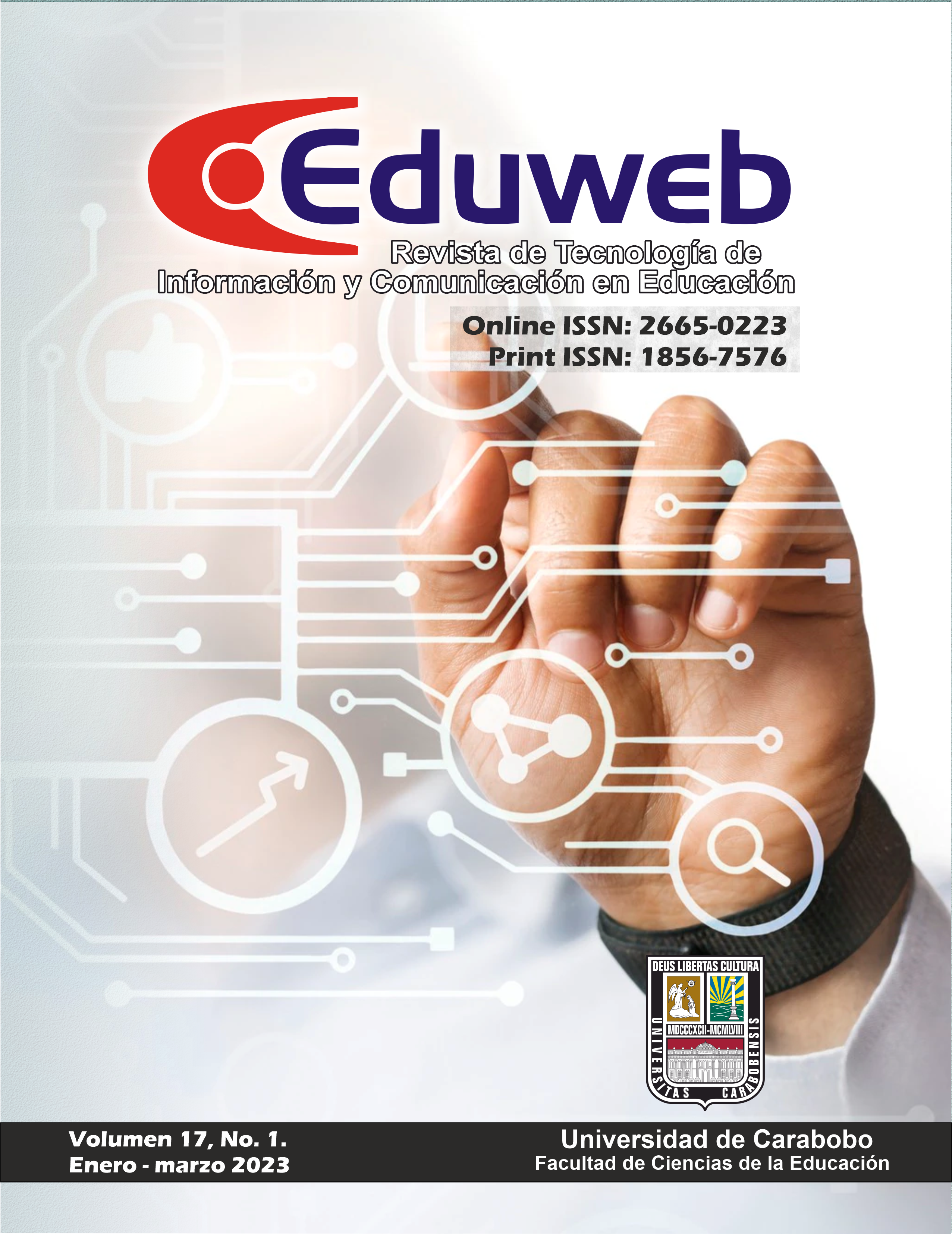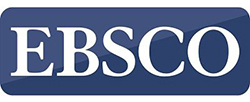Linguistic features of communication in Ukrainian
DOI:
https://doi.org/10.46502/issn.1856-7576/2023.17.01.11Resumen
The establishment of the language in the country should occur under conditions providing relevant linguistic support for this process, as well as proper legal support, for which unique instructional techniques for communication should be used. In Ukraine, in-depth contrastive studies of contact languages are used to successfully implement this process. Contrastive vocabulary dictionaries are created. Interpretive and translation dictionaries are being improved, including both general language and specialized ones. Along with this, special dictionaries are also being expanded due to units illustrating the grammatical properties of the Ukrainian language. The purpose of the academic paper is to systematize information regarding studying issues in the scientific literature related to the linguistic features of the communication process in the Ukrainian language, as well as to clarify their most significant practical aspects. Analytical-bibliographical, systemic-structural, comparative, logical- linguistic methods, analysis, synthesis, induction, and deduction were used in the course of the research to study scientific literature on issues related to the Ukrainian language’s linguistic features. At the same time, a questionnaire was used to practically clarify certain aspects of communication in Ukrainian from the perspective of its linguistic characteristics. Based on the research results, the theoretical fundamentals, concepts and main trends in the linguistic field were studied, as well as the survey results on the linguistic aspects of the communication process in the Ukrainian language were discussed.
Citas
Anggraeni, W., Wahibah, W., & Faqihuddin Assafari, A. (2020). Teachers’ Strategies in Teaching Speaking Skills at SMAN 1 Palopo. FOSTER. Journal of English Language Teaching, 1(1), 83-97. https://doi.org/10.24256/foster-jelt.v1i1.9
Bidzilya, Y. M., Haladzhun, Z. V., Georgiievska, V. V., Solomin, Y. O., & Sydorenko, N. M. (2021). Ukrainian communication and media in Romania: from birth and progress to regress. Linguistics and Culture Review, 5(4), 234-253. https://acortar.link/6Kb0g3
Cavallaro, C.J., & Sembiante, S.F. (2021). Facilitating culturally sustaining, functional literacy practices in a middle school ESOL reading program: a design-based research study. Language and Education, 35(2), 160-179. https://doi.org/10.1080/09500782.2020.1775244
De Oliveira, L.C., & Westerlund, R. (2021). A functional approach to language development for dual language learners. Journal of English Learner Education, 12(1) ,2. https://stars.library.ucf.edu/jele/vol12/iss1/2
Harvey, L., Tordzro, G., & Bradley, J. (2022). Beyond and besides language: Intercultural communication and creative practice. Language and Intercultural Communication, 22, 103-110. https://doi.org/10.1080/14708477.2022.2049114
Havard, W.N., Chevrot, J., & Besacier, L. (2019). Word recognition, competition, and activation in a model of visually grounded speech. In Proceedings of the 23rd Conference on Computational Natural Language Learning (CoNLL), 339–348, Hong Kong, China. Association for Computational Linguistics. https://william-n-havard.github.io/assets/pdf/articles/havard-etal-2019-word-poster.pdf
Krasnobaieva-Chorna, Zh., & Harbera, I. (2022). Features of modern pandemic text translation: Psycholinguistic experiment. Journal of Language and Linguistic Studies, 18(1), 633-642. Doi: 10.52462/jlls.208
Kalmykova, L., Kharchenko, N., & Mysan, I. (2021). «I-language» i. e. «Individual language»: The Problem of Functional Generalization. Psycholinguistics, 2(1), 59-99. https://doi.org/10.31470/2309-1797-2021-29-1-59-99
Korolyov, I. (2022). Ecolinguistic Mode in the Language Policy of Ukraine. Harmonious multilingualism, Sustainable Multilingualism. https://doi.org/10.2478/sm-2022-0001
Llinares, A., & McCabe, A. (2020). Systemic functional linguistics: the perfect match for content and language integrated learning. International Journal of Bilingual Education and Bilingualism, 1- 6. https://doi.org/10.1080/13670050.2019.1635985
Maaß, C., & Rink, I. (2020). Scenarios for easy language translation: How to produce accessible content for users with diverse needs. In Easy language research: text and user perspectives. Christiane, 41–56. Berlin: Frank and Timme. https://acortar.link/1QM5Dv
Moser, M. (2020). The language question as a factor of influence on Ukraine`s national security. Strategic Panorama, 1-2, 29-41. https://doi.org/10.53679/2616-9460.1-2.2020.04
Parkhurst, S.J., & Parkhurst, D.D. (2018). Lexical Comparisons of Signed Languages and the Effects of Iconicity. in Work Papers of the Summer Institute of Linguistics, University of North Dakota Session. https://doi.org/10.31356/silwp.vol47.02
Qian, Z., Lee, E., Lu, D., & Garnsey, S. (2019). Native and non-native (L1-Mandarin) speakers of English differ in online use of verb-based cues about sentence structure. Bilingualism- Language and Cognition, 22(5), 897–911. https://doi.org/10.1017/S1366728918001001
Șimon, S., Dejica, D., Fărcașiu, M.A., & Kilyeni, A. (2022). New trends in translation and interpreting studies: Linguistic accessibility in Romania. Open Linguistics, November 4. https://doi.org/10.1515/opli-2022-0217
Sokolova, S. (2022). The Problem of Choosing the Language of Communication: Ukrainian Realities. Cognitive Studies, 1. https://doi.org/10.11649/cs.2649
Tavrovetska, N., & Shebanova, V. (2020). Cross-Cultural Research of the Use of Obscene Language in the Youth Environment. Psycholinguistics, 28(1), 239-266. https://doi.org/10.31470/2309-1797-2020-28-1-239-266
Ukume, G.D., Uguma, V.U., & Agbinya, G.A. (2020). Functional literacy in reading comprehension: relative effectiveness of using interactive video instructional mode and tutorial video instructional mode in teaching. Lwati: A Journal of Contemporary Research, 17(1), 18-31. https://www.ajol.info/index.php/lwati/article/view/192061
Ushakova N., Aleksieienko T., Kushnir, I., Zozulia, I., & Uvarova, T. (2022). Storytelling Technique in Teaching Ukrainian as a Foreign Language. Theory and Practice in Language Studies, 12(4), 629-638. https://doi.org/10.17507/tpls.1204.02
Zalizniak, H. (2020). Language situation change in Ukraine as a result of the revolutionary events of 2013–2014 (Findings from a mass survey). In D. Müller & M. Wingender (Eds.), Discourse and practice of bilingualism: Contemporary Ukraine and Russia. Tatarstan: Harrassowitz Publishing House, 71-87. https://doi.org/10.2307/j.ctv1c9hm7h.9
Descargas
Publicado
Cómo citar
Número
Sección
Licencia
Derechos de autor 2023 Viktoriia Zinchenko, Iryna Lopatynska , Tamara Sabelnykova , Neonila Tilniak, Liliia Sydorenko

Esta obra está bajo una licencia internacional Creative Commons Atribución 4.0.















